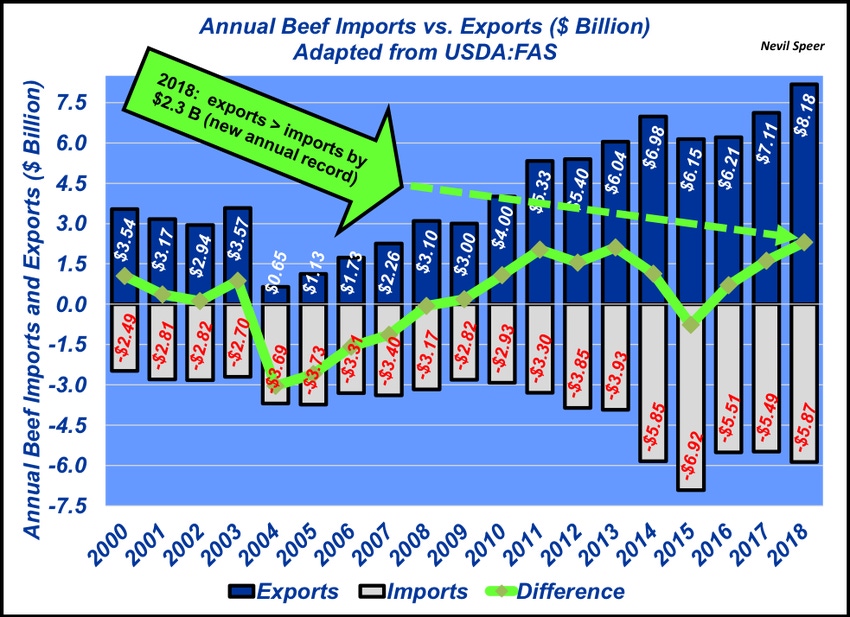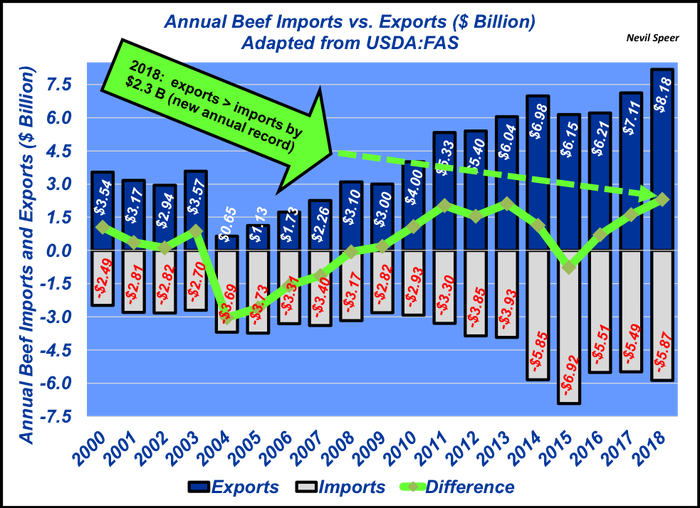Beef’s trade balance sets new record
Total year beef exports established a new record at nearly $8.2 billion– more than $1 billion ahead of 2017.
March 13, 2019

During the past several weeks, Industry At A Glance has highlighted various aspects of international trade, with specific focus on the influence of feeder and slaughter cattle imports. For more on those discussions, see:
Meanwhile, USDA just released final trade numbers for 2018 – including beef products. Total year beef exports established a new record at nearly $8.2 billion– more than $1 billion ahead of 2017.
That export value is equivalent to roughly $370 per head for every fed steer and heifer marketed during the year, or about $27 per cwt for a 1,350-pound steer or heifer, also a new annual record. Meanwhile, import values totaled $5.87 billion.

This week’s illustration highlights the annual trends of imports and exports, along with the respective trade balance. Last year’s exports exceeded import values by more than $2.3 billion – establishing a new annual trade balance record. Also, important to note here, the quantitative difference becomes even more meaningful considering the qualitative composition of imports versus exports.
That is, the majority of beef imports are lean beef trimmings that are blended with 50-50 trim to make hamburger. And from that perspective, beef imports actually create value for the beef industry—otherwise, much of that 50-50 trim would possess little value. Meanwhile, exports are comprised of higher-end beef cuts and variety meats, which would have essentially zero value in the domestic market other than as an ingredient in pet food.
With all that in mind, how do you perceive the value of exports and imports to the U.S. beef industry? Leave your thoughts in the comment section below.
Nevil Speer serves as an industry consultant and is based in Bowling Green, KY. Contact him at [email protected].
About the Author(s)
You May Also Like




.png?width=300&auto=webp&quality=80&disable=upscale)
